Drought-tolerant landscapes glow with bright green foliage and splashes of orange wherever flame acanthus (
Anisacanthus quadrifidus var.
wrightii) grows. Its nectar-rich blossoms draw butterflies and hummingbirds.
Don’t let its delicate appearance fool you. This Southwestern native can handle the intense heat of summer as well as temperatures down to 0 degrees Fahrenheit (minus 17.8 degrees Celsius) with no problem. Add this medium-size shrubby perennial in a sunny spot, and it will reward you with nonstop flowering from late spring to early fall.
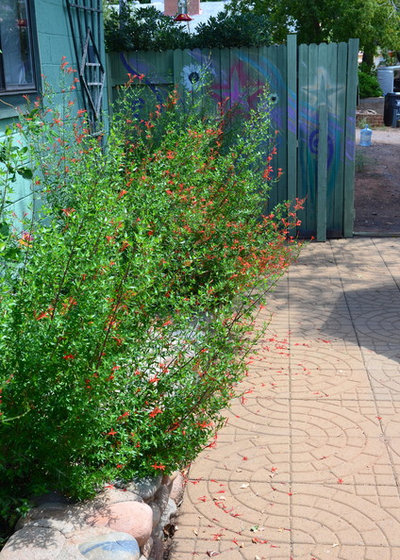
Noelle Johnson Landscape Consulting
Botanical name: Anisacanthus quadrifidus var.
wrightii (syn.
Anisacanthus wrightii)
Common names: Flame acanthus, hummingbird bush, Wright’s desert honeysuckle, Texas firecracker
Origin: Native to southwestern Texas and northern Mexico
Where it will grow: Hardy to 0 degrees Fahrenheit, or minus 17.8 degrees Celsius (USDA Zone 7; find your zone)
Water requirement: Drought-tolerant; needs water every one to two weeks from late spring to early fall and every three to four weeks in winter
Light requirement: Full sun to partial shade
Mature size: 3 to 5 feet tall and wide
Benefits and tolerances: Drought-tolerant; attractive to butterflies and hummingbirds; moderately deer-resistant
Seasonal interest: Tubular orange flowers from late spring to early fall
When to plant: Spring or fall
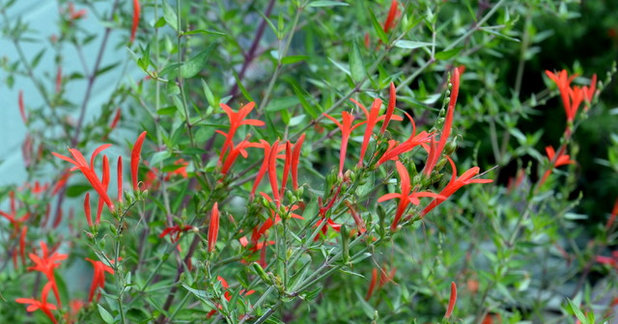
Noelle Johnson Landscape Consulting
Distinguishing traits. Bright green leaves, 2 inches long and three-quarters inch wide, appear on olive-gray stems beginning in late spring and are followed soon after by tubular orange flowers. Flame acanthus
branches lose their leaves in winter and remain leafless until late spring.
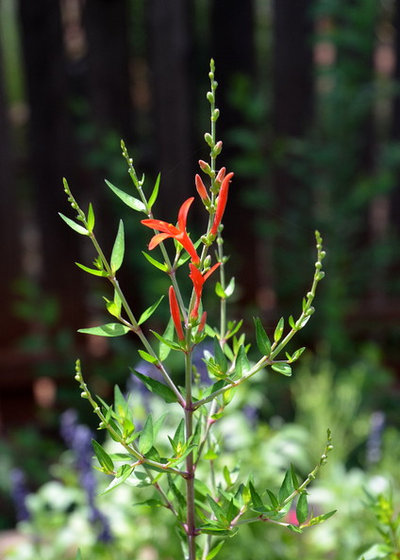
Noelle Johnson Landscape Consulting
The number of blooms produced is directly related to the amount of sun that flame acanthus receives — more sun means more flowers.
Each flower is about
1½ inches long and opens out into a star shape at the tip. Hummingbirds and butterflies alike search out the nectar-rich flowers.
‘Mexican Fire’ is a popular variety that has darker foliage and flowers.

QUERCUS
Flame acanthus serves as a backdrop to damianita.How to use it. Flame acanthus is perfect for patio areas, perennial beds and by swimming pools. Be sure to put it where you can observe the butterflies and hummingbirds that are sure to visit.
Plant flame acanthus in the background of perennial beds, where its orange blossoms have greatest effect. Plant lower-growing plants such as angelita daisy (
Tetraneuris acaulis), blackfoot daisy (
Melampodium leucanthum), damianaita (
Chrysactinia mexicana) and purple trailing lantana (
Lantana montevidensis) in front.
For contrasting flower colors, plant
flame acanthus alongside purple-flowering Russian sage (
Perovskia atriplicifolia) or coneflower (
Echinacea spp.)
The airy growth habit adds great texture contrast when planted alongside larger-leaved plants or next to boulders.
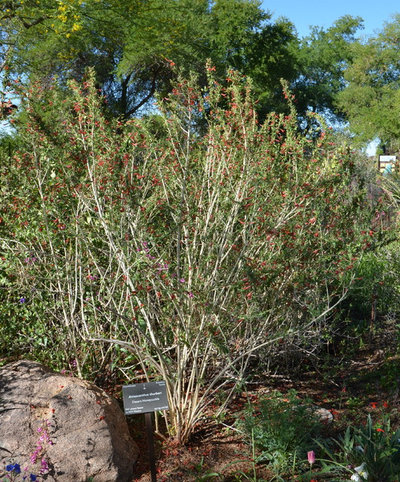
Noelle Johnson Landscape Consulting
Anisacanthus thurberi is a close relative and can be used in much the same way. It’s taller, at 5 to 8 feet, and produces red and sometimes yellow or orange flowers earlier in the season.
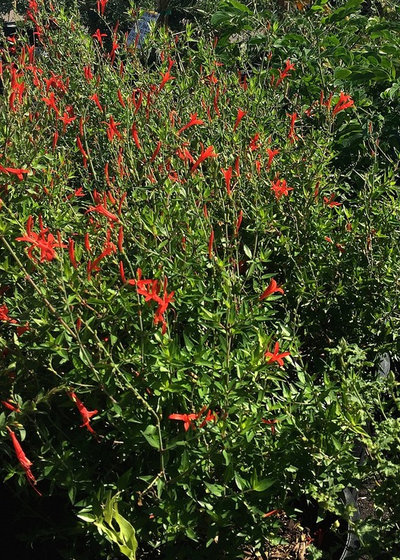
Noelle Johnson Landscape Consulting
Planting notes. Plant flame acanthus in well-drained soil. No supplemental fertilizer is required, but the plant does appreciate a 1-inch layer of mulch around its base in early spring and again in fall.
This shrubby perennial is low-maintenance and needs relatively little pruning. Prune back to within 6 inches of the ground in late winter. If desired, prune lightly in early summer to control size. Avoid pruning in late summer, which can decrease blooming.





